Fix Your 401(k)
A few simple changes now can make a big difference in your nest egg later.

The 401(k), Americans' ticket to retirement, is getting an upgrade. Many plans are already enrolling workers automatically and upping their contributions each year. Soon it will be easier to figure out how much your plan is charging you, whether your target-date fund is aligned with your goals, and who you can turn to for investment advice.
"The next decade will be a turning point for 401(k) plans," says Chip Castille, head of defined-contribution plans at BlackRock, the world's largest asset manager. That's great news for the nearly 50 million workers who rely on 401(k) plans as their primary -- and in many cases, only -- source of retirement savings.
In the meantime, inertia, once the foe of employees who delayed signing up for their company 401(k) plan or dithered over investment choices, has become their new best friend. Despite devastating market losses in 2008, most 401(k) participants stuck with their investment plans and continued to make regular contributions. As a result, the average 401(k) balance increased 23% in 2009, and many accounts rebounded to their prerecession levels, according to a new Vanguard study of more than three million plan participants.

Sign up for Kiplinger’s Free E-Newsletters
Profit and prosper with the best of expert advice on investing, taxes, retirement, personal finance and more - straight to your e-mail.
Profit and prosper with the best of expert advice - straight to your e-mail.
That's encouraging news, but don't get too complacent. Most employees could -- and should -- do more to secure a comfortable retirement. Start by making sure you have a plan that fits your personality, whether you need hand-holding or prefer to go it alone. If your plan falls short, follow our advice on how to lobby your boss to improve it. A few small changes in how you save and invest your money today can make a huge difference in your future nest egg.
Q: How do I know whether my 401(k) is any good?
Your plan should offer a well-diversified mix of low-cost investment choices. An employer match is a plus because employees tend to save more when their company kicks in money. Investment guidance and regular, personalized report cards to show you whether you're on track are important parts of a great 401(k) plan.
A few years ago, Stephanie Banister, director of finance at Accept Corp., a software company based in Santa Clara, Cal., took a hard look at her company plan and didn't like what she saw. She wasn't satisfied with the investment choices and, despite her previous experience as comptroller of a pension firm, she couldn't figure out how much the company or the individual employees were paying in fees for their 401(k). The plan's custodian wasn't much help.
So, with her boss's blessing, Banister hired an independent consultant to review the company's plan and, ultimately, put together a better one. At the time, Accept had only 28 employees, but Banister knew that the start-up firm needed a solid 401(k) plan as a recruiting tool. Because of economies of scale, large companies can usually hold the total fees in their 401(k) to well below 1% of assets each year, but smaller plans often pay fees of 3% or more annually. By switching providers and redesigning the plan, Accept was able to cut the fees its employees pay to about 1.2% annually -- less than half of what they were being charged by their former custodian (not counting a flat administrative fee paid by Accept).
Q: How do I choose the right investment mix?
At Accept, employees can choose from five professionally managed portfolios of low-cost index funds. They range from aggressive-growth funds heavily tilted toward stocks for the under-30 set to an income-heavy mix for employees near retirement. The plan clearly outlines each portfolio's underlying investments, fees and projected rate of return. All employees have to do is select a portfolio and let the plan's investment manager handle the rest.
Accept has nearly 50 employees now, and Banister, who also acts as human-resources manager, often lectures new hires about the importance of saving for their future. "If an employee does not want to participate in one of the portfolios, they have to give me a notarized waiver," says Banister. So far, only one has opted out.
Q: How much of my salary should I be putting away?
Probably more than you're socking away now. Most employees are saving 7% a year or less, and employers that offer matching contributions typically kick in 3% of pay. That simply isn't enough. The old rule of thumb of saving 10% of your gross pay was designed in the days when more people had access to traditional pensions and employer-provided retirement savings. In this era of you're-on-your-own retirement, you should aim to save about 15% of your gross salary, including any employer contribution. Workers are permitted to stash up to $16,500 in their retirement accounts in 2010; those 50 and older can squirrel away an extra $5,500 in catch-up contributions.
Hewitt Associates, a benefits consulting company, estimates that the average employee needs to save about 11 times annual earnings -- on top of Social Security benefits -- to maintain his or her standard of living in retirement. So if you earn $50,000 a year, you should strive to save $550,000 by the time you retire. Assuming you withdraw 4% a year, or $22,000, from your portfolio and you receive about $20,000 a year from Social Security, you would be able to replace the recommended 85% of your current income in retirement. (If you have a pension or other source of retirement income, such as a part-time job, or you expect to sell your house and live off the proceeds, you may not need to save as much.)
Hewitt projects that 80% of workers will fall far short of that goal unless they beef up their savings now or plan to work longer. "This is a wake-up call for employees," says Rob Reiskytl, Hewitt's leader of retirement-plan strategy and design. A separate study by the Employee Benefit Research Institute found that nearly half of current workers are at risk of running out of money during a lengthy retirement. "Retirement may be a long way off, but workers need to start saving or be prepared to dramatically reduce their overall spending in retirement," Reiskytl warns.
Q: When should I start saving for retirement?
As early as possible. A Hewitt analysis shows that a 25-year-old employee who makes $30,000 a year should meet all of his retirement needs if he continues to save 11% of pay each year throughout his career -- assuming he also receives a 5% employer contribution. But if he waits until age 40 to start saving, he'll have to stash 17% of pay in his 401(k) each year to amass an adequate nest egg.
If your current savings rate is on the skimpy side, don't panic. You can build up your contributions over time. Hewitt found that many workers who commit to increasing their retirement contributions by as little as 1% of pay each year for five years will be on track to meet most of their financial needs in retirement.
Q: Help! I really need investment advice.
Brooke Whicher, 28, is the first to admit that she didn't know much about investing, so she was glad to accept the one-on-one guidance that was offered when her company switched to a new 401(k) provider a few years ago. The adviser explained how Whicher's ultra-conservative portfolio of stable-value and bond funds was inappropriate for someone who has four decades to build a retirement nest egg. She agreed to add some domestic and international stocks and a dash of real estate holdings to her mix and to sign up for an auto-escalation feature that will eventually boost her contribution rate from 4% to 10% of salary.
Despite the market's volatility over the past year, Whicher's 401(k) balance nearly doubled between January 2009 and June 2010, to about $20,000. "I'm able to get more for my money by buying more shares at lower prices," says Whicher, who works for a copyright firm in Boston.
In addition to her semiannual face-to-face meetings with representatives from the Principal Finance Group, she receives quarterly account statements that chart her progress. At her current 8% contribution rate, plus an employer match, she's on target to accumulate about $2.7 million by the time she's 67, assuming an 8% annual rate of return. Boosting her contribution to 10% would put her on track for a $3-million nest egg nearly 40 years from now.
More than half of all plans currently offer investment advice to participants. A recent survey of more than 260 plan sponsors found that 25% of them will add an advice component when the U.S. Department of Labor issues long-awaited rules on who may dispense unbiased advice, either in person or through computerized models, and how they may charge for those services.
If you don't have access to investment advice at work, you can use retirement-planning tools from TD Ameritrade or Fidelity. Or, for $200 a year, you can get personalized advice about the investment choices within your plan from Smart 401k.
Q: Is there a simple investment option?
Target-date funds are a good solution for most employees who have little time for, or interest in, managing their own investments. They are one of the fastest-growing investment options in 401(k) plans. The concept is simple: Pick the fund with a date in its name that corresponds to your expected retirement year and funnel all your savings into that one fund. The fund will automatically change the investment mix of stocks, bonds and cash over time to grow more conservative as you near retirement.
But target-date funds are not without problems. Returns of target-date funds with the same due date can vary widely because each fund family has its own mix of assets and follows its own so-called glide path when shifting to more conservative investments.
Although they eliminate the most egregious investing errors -- such as young workers investing too conservatively, near-retirees doubling down on all-stock portfolios or employees of any age holding large concentrations of company stock -- they are not immune from losses. In a spectacular example, some 2010 funds designed for workers on the verge of retirement lost 30% or more during the 2007-09 bear market. As a result, the Securities and Exchange Commission has proposed new rules to require that target-date funds spell out their investment mix and glide path in their marketing materials and make it clear to investors that returns are not guaranteed.
In the meantime, you can ease your mind about your target-date fund by peeking under the hood. Morningstar.com rates 20 families of target funds, and at www.djindexes.com you can compare target funds against the Dow Jones Target Date index. You can also customize a target-date fund choice to suit your personal risk tolerance. Say you're 45 and 20 years away from retirement, but you are more aggressive than the typical 2030 fund investor. You can boost your risk -- and potential return -- by choosing a 2040 fund; if you are more conservative than most, you can scale back risk by selecting a 2020 fund.
Q: What's the big deal about 401(k) fees?
Lower fees mean that more money stays in your account, which can make a big difference over the long haul. Say a 35-year-old worker leaves $20,000 in his 401(k) plan when he switches jobs and doesn't add any more to it. If the account earned 7% a year, minus 0.5% in fees, his balance would grow to about $140,000 by age 65. But if the fees were 1.5% annually, the average net return would be reduced to 5.5%, and the $20,000 would grow to just $104,000. That one-percentage-point difference in fees would trim his account balance by about 25% over 30 years.
Even though most employees don't have Stephanie Banister's executive clout or financial expertise, every plan participant has the right to ask how much his or her 401(k) costs. In the past, it has often been difficult to get a straight answer, but that is about to change. Starting next July, the Labor Department will require 401(k) plan providers to disclose all their costs and services to plan sponsors. Next, the department is expected to outline what fee information must be passed on to employees. The challenge is to provide employees with a clear summary of the plan's costs without burying them in details they don't need or can't understand.
The disclosure of all fees will force the industry to become more competitive, says Jeff Acheson, managing director of SD Retirement Plan Solutions, in Columbus, Ohio. "Ultimately, that should lead to lower expenses and better results for retirement-plan participants across the board."
Q: How do I know whether my plan's fees are reasonable?
Median annual fees for all plans are 0.72% of plan assets, according to the Investment Company Institute. They may be substantially less for big plans and more for small ones. Although plan sponsors are legally bound to make sure that fees are reasonable, reasonable does not always mean lowest, says Tom Kmak, president of Fiduciary Benchmarks, a company that helps employers evaluate their workers' retirement readiness. Providers that offer better services, such as automatic enrollment and annual escalation features, and issue clear progress reports to employees usually charge more than providers that offer a stripped-down investment menu. But the extra cost may be justified, says Kmak: "Features that improve participant behavior are worth a ton."
In the meantime, you can do what Banister did and log on to www.brightscope.com, an independent rating service, to see how your company 401(k) plan stacks up against its industry peers and plans of similar size. You can also use Brightscope's free personalized fee report to find out how much your plan is charging you.
Q: My plan stinks. Should I skip it altogether?
If your 401(k) plan gets a poor rating or you discover you're paying excessive fees, contribute just enough to your 401(k) to capture your employer match. Direct the rest of your savings to a traditional IRA or to a Roth IRA. And if your company doesn't offer a match, skip the bad 401(k) altogether and go straight to an IRA. In 2010, you can contribute up to $5,000 to a traditional or Roth IRA and $6,000 if you're 50 or older. (You can split your contribution between both types of IRAs as long as your total contributions don't exceed the annual limits.)
You can deduct all of your contributions to a traditional IRA if you don't participate in a retirement plan at work (or even if you do, as long as you are single and your income doesn't top $56,000 in 2010). If you're married and your spouse is covered by a retirement plan at work but you're not, you can deduct all of your IRA contributions as long as your joint income doesn't exceed $167,000 in 2010. Or, if you're willing to forgo the upfront tax break in exchange for tax-free withdrawals later, you can contribute to a Roth IRA as long as your income doesn't top $120,000 if you are single or $177,000 if you are married.
Q: Should I contribute to a Roth 401(k)?
Jeff Lisenby, general counsel of ProAssurance, a Birmingham, Ala., company that provides liability insurance to doctors and lawyers, is convinced that federal income taxes are going up. So he and his wife, Shannon, an attorney in private practice, are hedging their bets by selecting the Roth option in their 401(k) plans. That means they forgo a tax deduction for contributions now but will be able to withdraw their funds tax-free in retirement.
Because their combined income tops the eligibility limits for contributing to a Roth IRA, Jeff asked his company to add a Roth 401(k) option a few years ago and its executive committee agreed. "For folks like us who are 20 years or more away from retirement, it makes sense to make contributions that are taxed now but that grow tax-free and are not taxed when the money is withdrawn," says Lisenby, 41. "It's a choice of pay now or pay a whole lot more later."
Q: Will I ever save enough money to retire?
Yes, but working a few years longer than you planned could significantly boost your bottom line. Social Security benefits will replace between 25% and 50% of your pre-retirement income if you wait until your normal retirement age to collect full benefits. (The higher your salary, the less Social Security will replace.)
Because the normal retirement age is rising, you'll have to work longer to lock in full benefits. Currently, new Social Security beneficiaries must wait until age 66 to collect their full benefits, and they can boost their payments by 8% for every year they delay collecting until age 70. The normal retirement age will gradually increase to 67 for anyone born in 1960 or later, and the age could be pushed even higher by future Social Security reforms.
Get Kiplinger Today newsletter — free
Profit and prosper with the best of Kiplinger's advice on investing, taxes, retirement, personal finance and much more. Delivered daily. Enter your email in the box and click Sign Me Up.

-
 Wall Street Is Worried About Apple Stock. Should You Be Too?
Wall Street Is Worried About Apple Stock. Should You Be Too?Analysts expect Trump's sweeping tariffs to have an outsized impact on Apple stock. How concerned should investors be?
By Karee Venema Published
-
 Machine Learning in Finance: Real-World Applications and Challenges
Machine Learning in Finance: Real-World Applications and ChallengesControlling machine learning in a finance environment requires stakeholders' commitment to creating a strong ethical foundation.
By Clay Bethune Published
-
 457 Plan Contribution Limits for 2025
457 Plan Contribution Limits for 2025Retirement plans There are higher 457 plan contribution limits for state and local government workers in 2025. That's good news for state and local government employees
By Kathryn Pomroy Last updated
-
 Medicare Basics: 11 Things You Need to Know
Medicare Basics: 11 Things You Need to KnowMedicare There's Medicare Part A, Part B, Part D, Medigap plans, Medicare Advantage plans and so on. We sort out the confusion about signing up for Medicare — and much more.
By Catherine Siskos Last updated
-
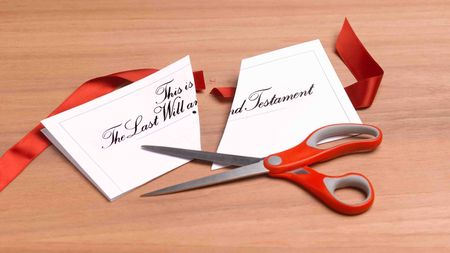 The Seven Worst Assets to Leave Your Kids or Grandkids
The Seven Worst Assets to Leave Your Kids or Grandkidsinheritance Leaving these assets to your loved ones may be more trouble than it’s worth. Here's how to avoid adding to their grief after you're gone.
By David Rodeck Last updated
-
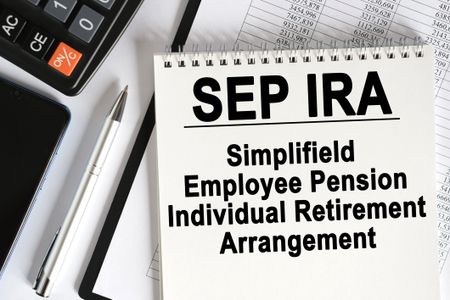 SEP IRA Contribution Limits for 2025
SEP IRA Contribution Limits for 2025SEP IRA A good option for small business owners, SEP IRAs allow individual annual contributions of as much as $69,000 in 2024 and $70,000 in 2025..
By Jackie Stewart Last updated
-
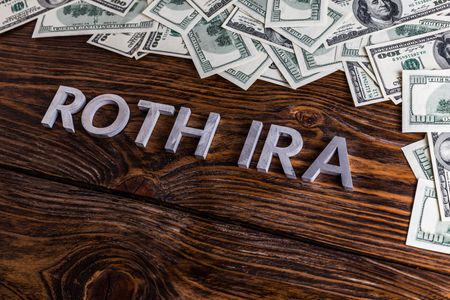 Roth IRA Contribution Limits for 2025
Roth IRA Contribution Limits for 2025Roth IRAs Roth IRA contribution limits have gone up. Here's what you need to know.
By Jackie Stewart Last updated
-
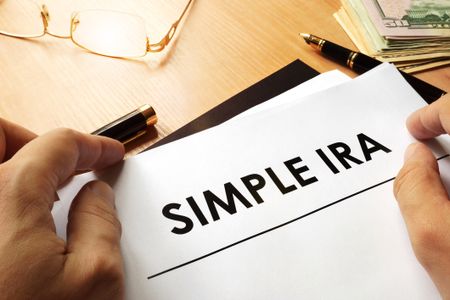 SIMPLE IRA Contribution Limits for 2025
SIMPLE IRA Contribution Limits for 2025simple IRA The SIMPLE IRA contribution limit increased by $500 for 2025. Workers at small businesses can contribute up to $16,500 or $20,000 if 50 or over and $21,750 if 60-63.
By Jackie Stewart Last updated
-
 457 Contribution Limits for 2024
457 Contribution Limits for 2024retirement plans State and local government workers can contribute more to their 457 plans in 2024 than in 2023.
By Jackie Stewart Published
-
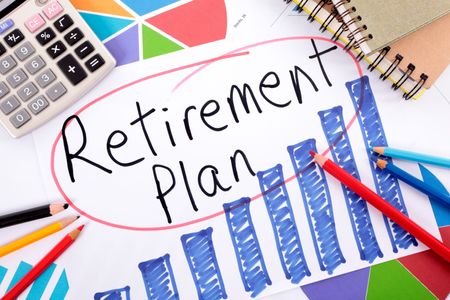 Roth 401(k) Contribution Limits for 2025
Roth 401(k) Contribution Limits for 2025retirement plans The Roth 401(k) contribution limit for 2025 increased, and workers who are 50 and older can save even more.
By Jackie Stewart Last updated